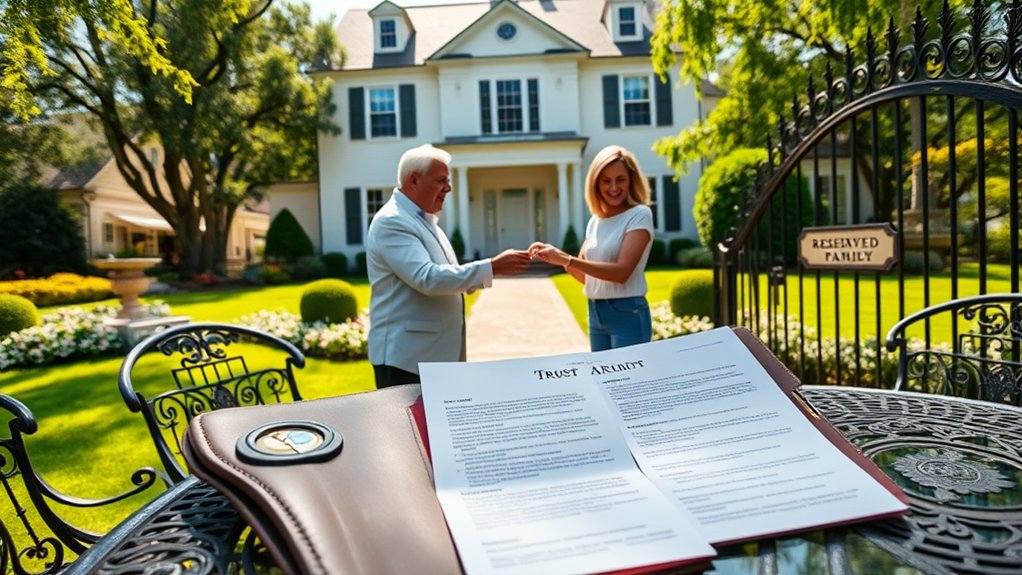Key Takeaways
- A QPRT allows you to transfer your home to your loved ones while continuing to live there.
- This strategy can potentially save thousands in estate taxes.
- QPRTs freeze your property’s value for gift tax purposes.
Enhancing Estate Planning with QPRTs
Just as you’re thinking about protecting your family’s future, you might discover that a Qualified Personal Residence Trust could be your ideal solution.
You’ll find this powerful estate planning tool lets you transfer your home to your loved ones while continuing to live there.
Potentially saving thousands in estate taxes, the magic of a QPRT lies in its ability to freeze your property’s value for gift tax purposes. But there’s more to this strategy than meets the eye.
Key Benefits and Tax Advantages of QPRTs
Setting up a Qualified Personal Residence Trust (QPRT) can reveal significant tax benefits while securing your family’s future home ownership.
You’ll transfer your primary residence or vacation home into the trust while retaining the right to live there for a set period, typically 10-15 years.
Under current Gift Guidelines, you’ll benefit from reduced gift tax liability since you’re only gifting the future interest of your home.
The QPRT structure helps minimize Estate Taxation by removing the property’s future appreciation from your taxable estate. When the trust term ends, your beneficiaries receive the property at a fraction of its current market value.
Setting Up and Structuring a QPRT: Essential Requirements
To make your QPRT work effectively, you’ll need to follow specific IRS guidelines and legal requirements during the setup process. Initial formation involves carefully selecting your residence and determining the trust’s duration.
| Requirements | Setup Steps | Documentation |
|---|---|---|
| Valid Property | Choose Home | Deed Transfer |
| Trust Duration | Select Term | Trust Agreement |
| Trustee Selection | Name Trustee | Acceptance Forms |
| Beneficiary Names | List Heirs | Gift Tax Return |
| Retained Rights | Define Terms | Legal Review |
During trust administration, you’ll continue living in the home while paying expenses and maintaining insurance. Remember to file the required gift tax return within the year of the QPRT’s creation.
Potential Risks and Strategic Planning Considerations
Life-changing QPRT decisions require careful consideration of potential pitfalls and strategic planning elements that could impact your estate’s future.
Mortality Risk stands as your primary concern – if you don’t outlive the trust term, your residence returns to your estate, potentially triggering significant tax consequences.
Strategic Considerations must shape your QPRT planning.
You’ll need to balance the trust term length against your life expectancy, evaluate your ability to pay rent if you outlive the term and assess your family’s long-term needs.
Remember, you can’t reverse a QPRT once it’s established, so thorough planning proves essential.
The Path to Preserving Your Legacy
A Qualified Personal Residence Trust (QPRT) can be your gateway to preserving your family’s legacy while ensuring your later years are comfortable in your beloved home.
This trust structure strikes a balance between planning for the future and navigating life’s uncertainties.
It offers a way to transfer your residence to loved ones with both grace and tax efficiency.
Why not take a moment to discuss this option with your trusted advisors?
It could be a smart step toward securing your family’s future.





















